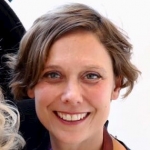The Amazon rainforest is the largest rainforest on our planet. Nowhere else in the world can we find more animal and plant species. Unfortunately, we lose on average 800 square kilometres of forest every day to deforestation for logging, agriculture or road construction. But there is still hope for our planet’s "green lung." For this, we are counting on artificial intelligence (AI) and the efforts of citizens like you.
Every year, the trees of the Amazon absorb billions of tons of CO2. They are therefore a crucial weapon in the fight against climate change. Yet we are losing an ever-increasing area of tropical rainforest. The month of May 2021 even set a sad record as 200,000 football pitches of trees were felled. The shrinking of the rainforest has a direct impact on water supplies, soil erosion and biodiversity.
Deforestation and disease
The outbreak of COVID-19 was also a warning sign. Many diseases emerge when a virus spreads from animals to humans. The majority of these animals used to live in isolated patches of rainforest and rarely had contact with humans. But the more we destroy our forests, the more we risk a new pandemic. Deforestation therefore urgently needs our attention, and AI can play a key role in this.
Last year, IIASA (International Institute for Applied Systems Analysis) and SAS joined forces. On Earth Day’s 50th anniversary, we launched a major initiative to map the damage with the help of computer vision models. The project should enable environmental organizations and governments to recognize the first signs of deforestation and respond appropriately before a piece of forest is permanently lost.
Analyzing satellite images
Citizens with a heart for the planet also have a crucial role to play. AI may be able to analyze huge volumes of data, but a model must first be able to learn from human expertise.
“AI is not a magic box," says Véronique Van Vlasselaer, an AI and analytics expert at SAS. "For example, it's quite easy for us to distinguish a road from a river on a picture. That’s because we understand both concepts. For a computer model, this is less obvious since those roads and rivers take on different shapes in photos. By inserting human observations into the AI model, it will become increasingly successful at identifying suspicious activity on satellite images.”
By now, people from over 100 countries have classified some 90,000 satellite images. You can also help by visiting this website and analyzing images. IIASA and SAS hope that the AI model will eventually be able to accurately predict where the risk of deforestation is most serious.
If you're interested in learning more about crowd-driven AI and how the technology helps to tackle complex world problems, watch this free webinar.
